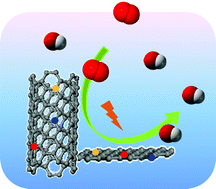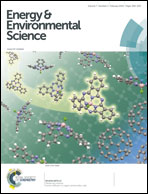Heterogeneous nanocarbon materials for oxygen reduction reaction
Abstract
Heterogeneous nanocarbon materials are being increasingly investigated and deployed in numerous new technologies and devices for sustainable energy conversion and storage. Nanocarbons often consist of fullerene, graphene and carbon nanotubes. Their derivatives include quantum dots, nanofibres, nanoribbons, nanospheres/capsules and other nanostructured morphologies. The heterogeneous forms of these nanocarbons stem from the implantation of alien atoms into the aromatic carbon lattice or the covalent grafting of functional groups onto the carbon basal plane or edge sites. Heterogeneous nanocarbons have shown remarkable advantages in solar cells, water splitting, supercapacitors, lithium ion batteries and catalysis. This review focuses on recent progress in the experimental and computational studies of the roles of heteroatoms in heterogeneous nanocarbons for electrocatalytic oxygen reduction reaction (ORR). Critical perspectives are devoted to the ambiguous phenomena in this emerging research area. The long standing debate about the active sites is discussed with an emphasis on more rational development of advanced nanocarbon-based electrocatalysts for ORR.


 Please wait while we load your content...
Please wait while we load your content...